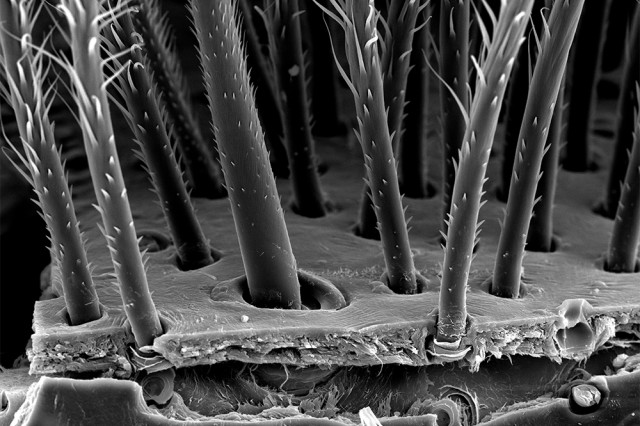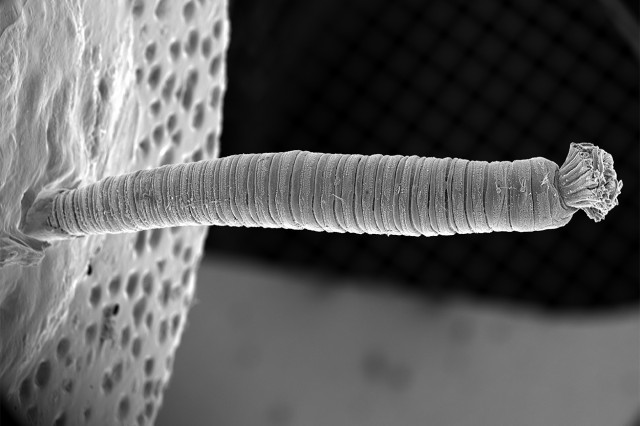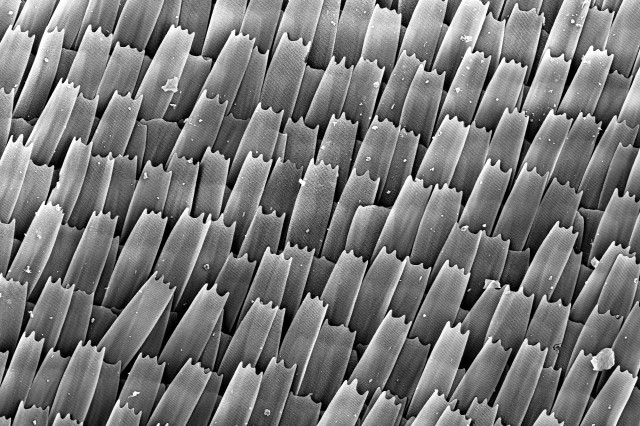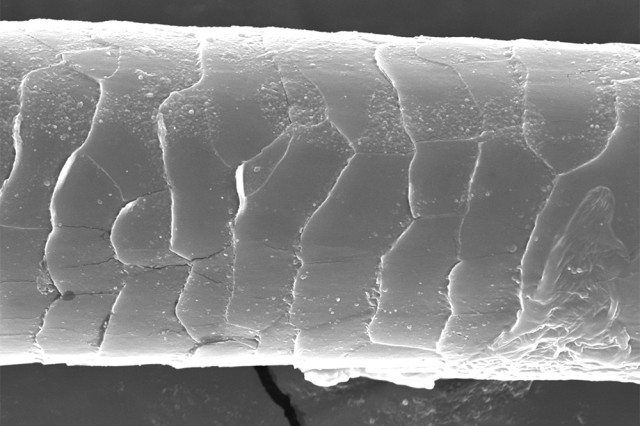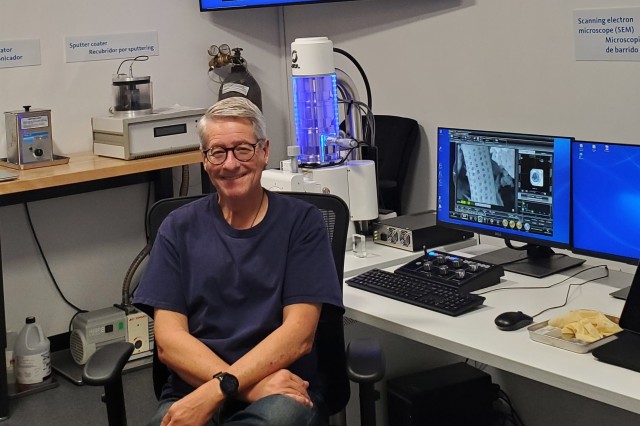Scanning Electron Microscope Demonstration
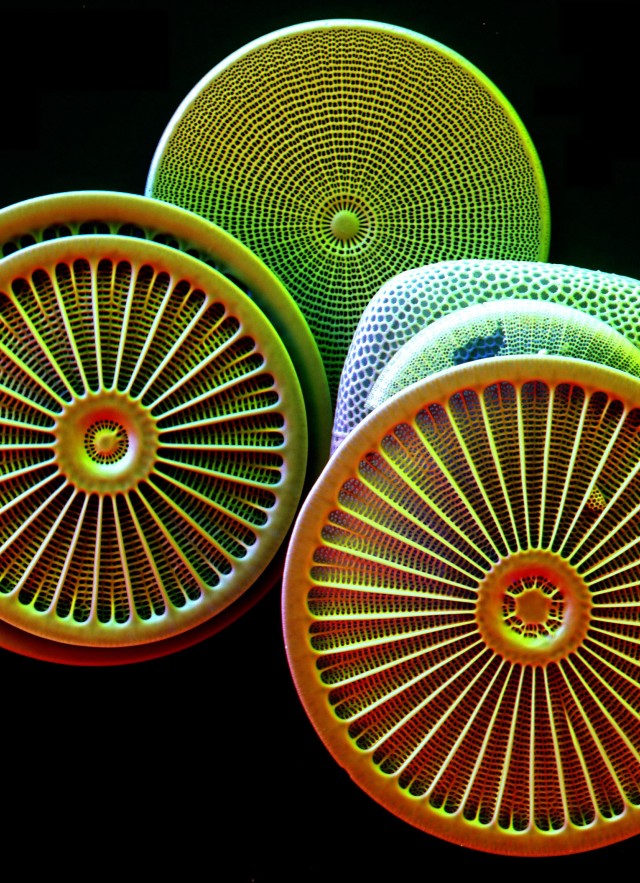
Date
Tuesdays and Thursdays, 11 am
Location
Tickets
Join an NHM scientist at the Scanning Electron Microscope Lab to learn how we use this important tool in discoveries about our natural world. Talks meet for 30 minutes at the Lab located in the back corner of the Gem and Mineral Hall on Level G.
During the demonstration, visitors will:
- Get an overview of this specialized equipment’s capabilities
- See specimens, like a butterfly wing, in amazing detail
- Have a chance to ask questions directly from a SEM expert
About the Scanning Electron Microscope
The Scanning Electron Microscope has a more powerful magnification ability than other microscopes thanks to their use of electrons. While traditional microscopes use photons (particles of light) the SEM uses electrons, negatively charged particles that have much shorter wavelengths than photons. These shorter wavelengths help reveal much finer details. It’s like the first time you watched a sporting event televised in HD–suddenly you can see the blades of grass on the field. This type of imaging has the power to help researchers understand their subjects on a deeper level, and the images they produce can help inspire wonder in our natural world. So when
